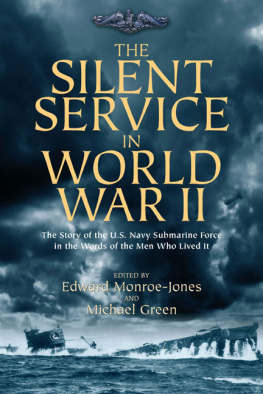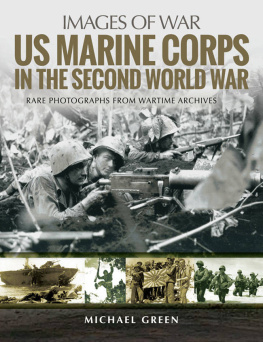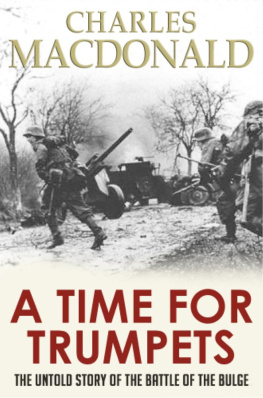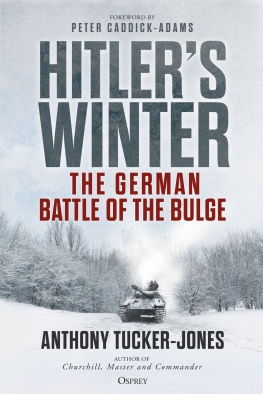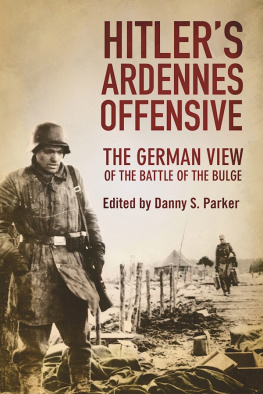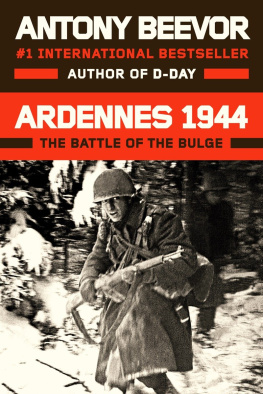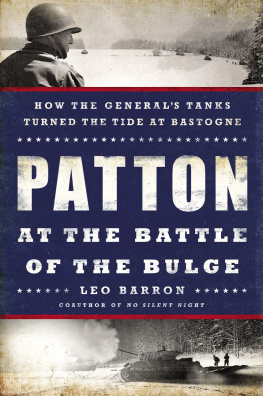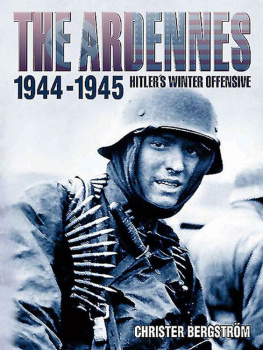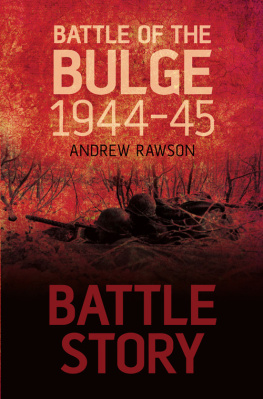WAR STORIES
OF THE
BATTLE OF THE
BULGE
Michael Green and James D. Brown

CONTENTS
ACKNOWLEDGMENTS
SPECIAL THANKS ARE DUE TO THE VETERANS of the Battle of the Bulge Association and its president, board of directors, and trustees for allowing the editors to use various first-person stories published in their quarterly association newsletter, the Bulge Bugle. More information on the Battle of the Bulge Association can be found at their website, battleofthebulge.org. Mention must also be made of the many Battle of the Bulge veterans who were kind enough to send in their first-person war stories to the editors in response to a notice placed in the Bulge Bugle requesting such stories. Due to space and format restrictions, not all of them could be used.
Thanks for help in completing this book are also due to Martin W. Andresen and Thomas Sweeney, both U.S. Army retired. Ken Berg was also more than kind in offering his research work on the Battle of the Bulge. Professional research work was done at the U.S. Army Military History Institute, located at Carlisle Barracks, Pennsylvania, by Tim Frank, who is available for hire and can be reached at historian1975@gmail.com.
INTRODUCTION
THE INTRODUCTORY PARAGRAPHS THAT FOLLOW SERVE ONLY TO help the reader gauge the monumental scale and complexity of the fighting that took place during the Battle of the Bulge. Our primary purpose is to share with the reader first-person stories of American soldiers that will provide a feeling for this important time and place. Some of the stories contained within this book are horrifying, which is the nature of combat, while others are sad, and a few humorous. Many detail the utter confusion of war and those who try to make some sense of it. All serve to commemorate the sacrifice and the suffering of those who served their country at one of its most trying hours.
Home by Christmas! In classical warfare, the duration of campaigns and wars could be measured in decades or even centuries. Armies moved as fast as they could walk, and their pace was further slowed by the passage of seasons and the ripening of crops along their route of advance. The Crusades, the Thirty Years War, and the Hundred Years War saw legions of soldiers march off to return both literally and figuratively older.
More modern wars, fueled by the efficiency of industrial logistics systems, became so costly in terms of blood and treasure that no nation could afford to stay at war for very long. It was necessary to decide conflicts in, at most, a few years, or they could not be won at all.
And thus it was in the winter of 194445 that it became increasingly believable to both the Allies and the Germans that they would be home by Christmas. This held a dark double entendre for the Germans because their lines were contracting so rapidly, it was clear that even if fighting continued into the New Year, most of it would be on German soil. For the Allies, particularly the British and Americans, it seemed certain that even the delusional Hitler would see that all was lost and sue for peace before the German homeland was utterly destroyed.
Hitler proved to be a cynic to the last and decided to gamble on the Western Allies increasing restlessness to see a quick end to the war. He was sure that one last powerful offensive in the West would accomplish a sorely needed political goal, even if he could not hope for an outright military turnabout. He hoped that an offensive against the British and Americans would give the Allies an excuse to accept an armistice, such as the one that had concluded World War I. Such a political solution would allow the Nazis to redeploy forces to the Eastern Front and stem the Red tide that was rushing ever closer to Berlin.
It may be observed that such a turn of events would not have been completely unwelcome by many leaders in both Washington and London, where concerns over Stalinist expansionism in the postwar era were already being raised. In later months, Gen. George Patton was famously censured for publicly stating the opinion that German forces should be rearmed and made part of a new alliance of British, American, and German forces to stamp out Bolshevism while Soviet forces were nearing exhaustion. In what would be the last winter of the war, however, Hitler was hoping that the Americans and British, even if they would not actively participate in a renewed offensive against the Russians, would at least withdraw their support for their ally.
In the pre-dawn darkness of December 16, 1944, Hitler launched the first wave of his massive surprise offensive, code-named Wacht am Rhein (Watch on the Rhine), against the weakly defended eighty-five-mile-long American-held Ardennes sector, which encompassed territory in Belgium, Germany, and Luxembourg. The German forces included 250,000 men, 1,900 artillery pieces, and almost 1,000 tanks and armored assault guns. Although the Allies held almost complete air superiority, Hitlers plan counted on the nullifying factor of poor flying weather to compensate for the Luftwaffes weakness.
The fierce fighting in the Ardennes Forest, which took place from mid-December 1944 through almost the end of January 1945, is more properly classified as a campaign than a single battle: It consisted of numerous battles spread over a fairly wide area at different times and involved nearly one million soldiers on both sides.
The 250,000 German soldiers that hurled themselves into the Ardennes were divided among three field armies; the Sixth Panzer Army, which was intended to deliver the main blow against the Americans, the Fifth Panzer Army on its northern flank, and the Seventh Army defending the southern flank of both their advances. Among these three field armies were seven corps, which oversaw twenty divisions, including several panzer divisions, plus another five divisions held in reserve.
The Germans immediate military goal was to reach the Allied-controlled port of Antwerp, Belgium, within a week, but the more realistic political goal was to inflict enough losses to the Western Allies to set the stage for an armistice. This would allow the Wehrmacht to concentrate its remaining resources on the Red Army.
On the morning of December 16, 1944, there were ninety-six Allied divisions along the Western Front border of Nazi Germany, which ran 450 miles from the northern tip of neutral Switzerland to the North Sea. It is axiomatic that an offensive operation such as Wacht am Rhein should have a force ratio of at least three-to-one in its favor to ensure success. Although Hitler did not have an exact count of the Allied forces arrayed against him, it is a reflection of the true intention of the German offensive that it was mounted with a nearly four-to-one unfavorable-force ratio. The German generals knew that the military objective of retaking Antwerp was not realistic, and Hitlers plan for a political victory was the best that could be hoped for.
The bulk of the Allied divisions were American, divided between the 6th and 12th Army Groups. The American 12th Army Group, commanded by Lt. Gen. Omar N. Bradley, oversaw three field armies on December 16, 1944, these being Lt. Gen. Courtney Hodges First Army, Lt. Gen. William H. Simpsons Ninth Army, and Lt. Gen. George S. Pattons Third Army.
Each of Bradleys three field armies oversaw three corps. A corps was a relatively small controlling headquarters in World War II, consisting of fewer than 200 men, whose job it was to control the divisions assigned to it. The three American field armies together had a combined total of 815,087 men.
There was also an important British and Canadian contingent, the 21st Army Group, under the command of Field Marshal Bernard Montgomery. Included in the group were the First Canadian Army and the Second British Army.



